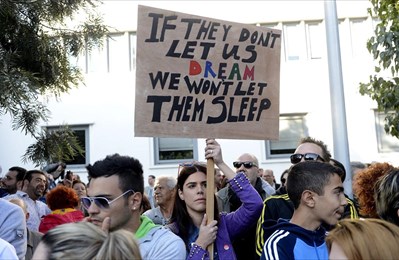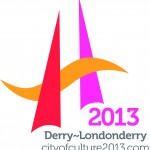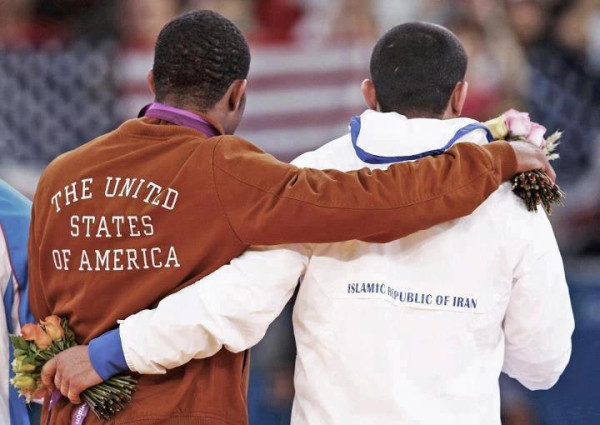In a years’ time citizens in the European Union will be at fever pitch as they prepare to vote in the elections for the European Parliament. Well perhaps not at fever pitch! Turnout at these elections has been declining in most member states. In only 9 countries in 2009, the last election, did half the voters cast a ballot. Apathy and indifference were stronger contenders.
2014 may well turn out to be markedly different. The European Parliament now has real powers. Under the Lisbon treaty, it is no longer a wasted vote or a missed democratic opportunity. Members of the European Parliament have already shown they can alter proposals from the European Commission and from the inter-governmental Council. The 2014-2019 European Parliament will feature far more in our news than its predecessors.
But who will be in the Parliament? At the moment it is dominated by four main political groupings: the Christian Democrat EPP, the Socialists and Democrats, ALDE. (liberals) and the Greens. All pro-EU and used to working in “the spirit of the EU”. Of course they all have a few mavericks but generally they work comfortably together. With well over 70% of the members they control the Parliament.
The rest form odd groupings: from the left to the right. Noisy, splintered, fragmented and mostly ineffectual,
But will this be the same after next years’ elections? The current political climate across the EU suggests otherwise. A feature of recent elections and polls in member states has been the rise of parties not affiliated with the big 4 at European level. Golden Dawn and Syrizia in Greece; UKIP in the UK, Grillo’s M25 in Italy. A new party will contest the German elections in September (pro-EU, anti Euro). Opinion polls in Spain show a breakdown in support for the two main parties with the left and centre gaining. Concurrently there is increasing support for the 15-M movement. Logic dictates that voters in Portugal, Ireland and Cyprus may not look too kindly on pro-EU candidates next year as the EU takes the blame for the austerity measures (and you can’t vote for the IMF). The far right-wing parties also seem to be gaining in popularity with their anti-EU, xenophobic, reactionary rhetoric. The True Finns, Swedish Democrats, Le Pen’s Front National.. the list, goes on. In the UK, sadly, it seems to be a given that UKIP will be the largest party in the May 2014 elections. If nothing else the noise from the far-right drags the centre of debate even further to the right.
Already alarm bells are ringing in Brussels. A European Parliament with a substantial minority being anti-EU or at least anti current policies? Indeed it is not too difficult to forecast a blocking minority (although the chances of all the “minority” parties agreeing on anything is remote).
The political parties are preparing. Gossip abounds about who from the in-crowd will get the top jobs. But outside of party politics there are several attempts to influence and mobilize opinion before the elections.
In June we see the “first-ever Citizens Summit” organised by the “EU Civil Society Contact Group“. The Group brings together eight large rights and value
based NGO sectors – culture, environment, education, development, human rights,
public health, social and women. The Summit aims:
to bring together for the first time professionals, practitioners and activists
from across the different sectors, culture, development, education,
environment, health, human rights, social affairs and women’s rights to
discuss the future of Europe. Our intention is to foster an open dialogue
amongst a diverse group from across Europe in order to start a genuine
participatory process on the future of the European Union, and what this means
for people living within its borders. We believe that by creating a shared
understanding and dialogue, we can help move forward common objectives for a
common future.
The Cultural Coalition for a Citizen’s Europe holds its latest conference in Lyon in May. After its meetings in Brussels and Amsterdam this coalition turns its attention to
At its borders, in a Mediterranean political and social transformation, Europe is experiencing a strong migratory pressure from its neighbours and more distant countries. Inside, the moral, social and economic crisis leads us to retreat, promoting the growth of xenophobia, nationalism or simply mistrust vis-à-vis foreigners (whether EU or non-EU ). How are we to consider the prospect of the European population’s decline in this major contemporary tension if we do not accept more than 55 million foreign workers in four decades? How should the cultural and civic dimension be taken into account in international relations, especially with countries of the Mediterranean basin?
Even the European Commission gets in on the act with the “New Narrative for Europe“. Launched by Commission president Barroso the project runs to three “états généraux” of participants, mainly representatives from the world of culture and intellectuals, in Warsaw, Paris and an as yet undetermined city in Germany. It will result in
the publication of a manifesto by the participants in the “états généraux” meetings and other interested parties, incorporating elements relating to the values, culture and history that represent the connecting link between Europeans, in order to develop a vision for Europe which can be adapted to the current challenges such as solidarity, strengthening the democratic legitimacy of the EU and the role of Europe in the age of globalisation and interdependence.
These initiatives are to be welcomed. But are they enough and will they tackle the hard issues of today? It is noticeable that none of the meetings in the three projects will take place in a country under a EU/ECB/IMF bail-out regime. Not perhaps a good message to send!
Trust in the six largest European Union member states as a basic concept is declining. When economic times are tough solidarity with fellow Europeans declines. Yet virtually all the solutions on offer, including those based on culture, seek greater Europeanness, More Europe.
Aart de Geus, head of the Bertelsmann Stiftung, a German think-tank, warns that the drive to surrender more key national powers to Brussels would backfire. “Public support for the EU has been falling since 2007. So it is risky to go for federalism as it can cause a backlash and unleash greater populism.”
Jurgen Habermas and Zygmunt Bauman have weighed into the debate about the limits of solidarity, the rise of populism and the risks to the European project. The Trade Unions are calling for a Social Europe as a way of going beyond the economic focus.
Barroso himself warns ” We cannot let populism, scepticism or pessimism undermine the foundations of Europe, not to speak about new forms of nationalism that I believe are a very serious risk for the European values that we cherish.”
The key test for the Cultural Coalition, the Citizen’s Summit and the New Narrative is to move beyond the cultural cosmopolitan, the “educated urbanists” in marketing jargon. I’m assuming that the participants will not use the projects to press for their own sectors’ financial case. Lobbying has its place: this is not that place.
There have been many fine sounding declarations of the importance of culture in Europe, how culture is at the heart of being European and how culture can support the European Union. (This last assertion is the hardest to sustain). I hope the initiatives do not come up with more of the same, however well-intentioned. The economic austerity in many countries in the EU, the threats to free movement of people (but not it seems capital), the failure of many austerity programmes, rising un-employment (and under-employment) change the context. Those previous declarations have appealed to the committed Europeans in times of plenty. Now is the time to send a positive message to those less than committed to a European Union.
It is probably too late for the projects to change their programmes but they surely must hold meetings away from the Brussels/France/Germany nexus. It will soon be EU-28 but you wouldn’t notice it.
Robin Wilson puts one of the key challenges this way:
For a young generation for whom the war is sepia-tinted history and neoliberalism offers only insecurity—including in some countries a more than even chance of being unemployed—’Europe’ therefore now holds no meaning except Erasmus programmes for the educated elite.
This chimes with a major report on Youth Participation in Democratic Life, which should be required reading in all three projects. The research looked at youth (13-30 year olds to match the EU’s Youth in Action programme) in six countries (Austria, Finland, France, Poland, Spain and UK). The report calls for major changes to remove poltiical and cultural barriers to increased youth participation.
Given the overwhelming levels of perceived betrayal, distrust, scepticism and/or anger expressed with regard to politicians by 95% of our focus group respondents from “reference”, “active” and “excluded” in all six countries and the survey results that point to a political offer that is often perceived as inadequate, this seems to us to be an immediate and significant challenge and action point.
A challenge indeed. Let’s see how they respond.
Like this:
Like Loading...



